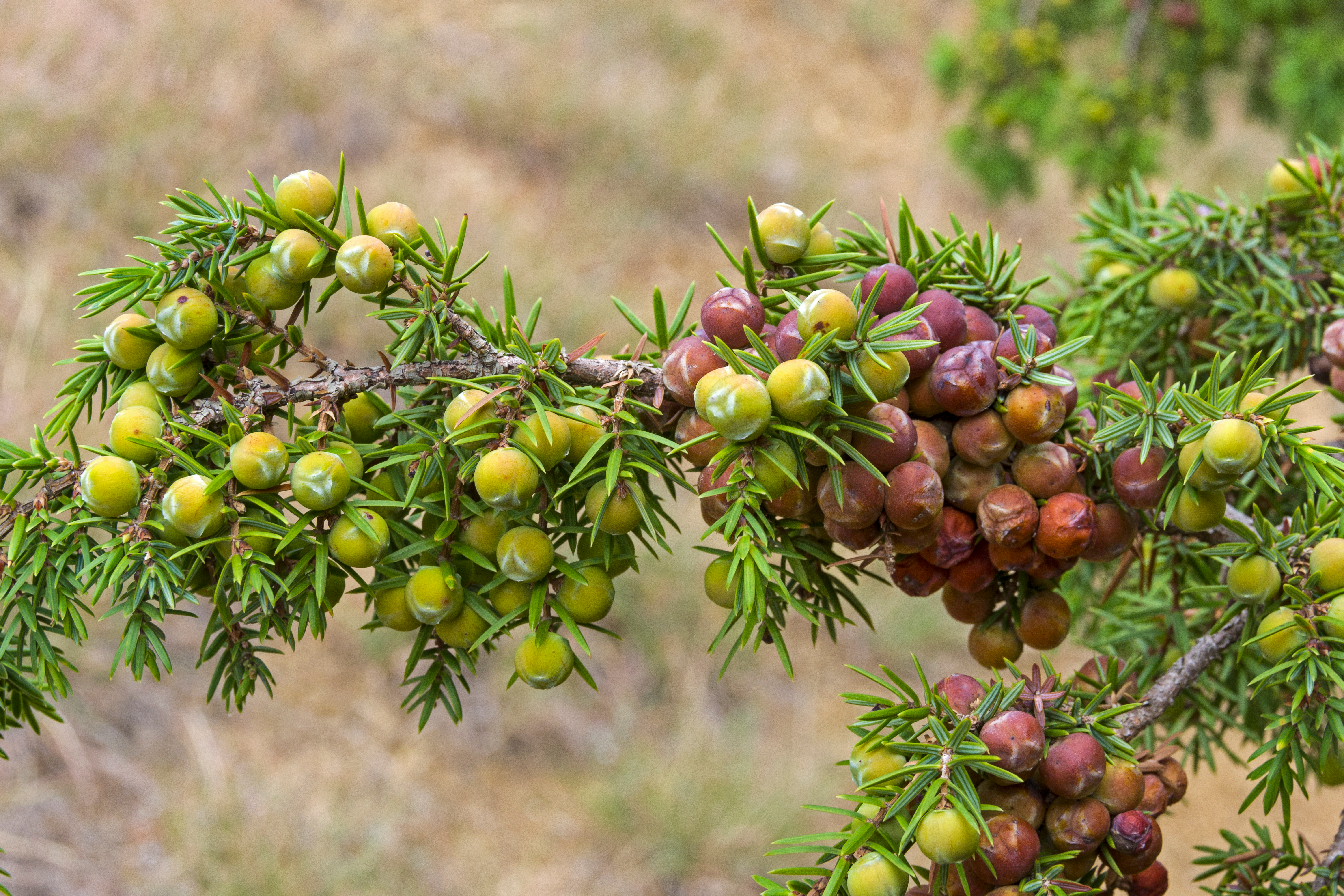Extraction process :
The Cade is a shrub that generally measures 1 to 2 metres in height. It grows in an arid climate, on rocky soils. It is cultivated for its wood, from which an essential oil is obtained all year round. However, the extraction yield is better in summer.
The wood is depressed into logs of about 80cm in diameter, and stored in the open air, in stacks. Before extraction, the wood is shredded into chips and then introduced into the extractor. To obtain the essential oil, the extraction is made with steam, under pressure, for several hours, to obtain the oil at the end of the process by settling over the cade hydrolate.
Another method of extraction, called dry or empyreumatic distillation, consists of pyrolyzing the wood in a furnace at 900 to 1000°C. In this extraction, the fumes are recovered and condensed to get a product called ''Cade Oil ''. This oil contains many molecules called benzopyrenes, that are carcinogenic, and is black in colour. To reduce the benzopyrene level from around 1000 ppm to 10 ppm, a rectification is made. The oil is placed under high vacuum to evaporate only the most volatile compounds, with relatively poor heating (maximum temperature reached at the head of the distillation column: 220°C). Then, the final product is called ''Rectified Cade '', which is light brown in colour and contains few carcinogenic compounds.
Nevertheless, it is nowadays generally the essential oil of cade that is used in perfumery, to avoid any presence of benzopyrene, without altering its smell.
Chemotypes :
Cade juniper is used for its wood, unlike the common juniper (Juniperus communis), used for its berries and branches. Both are among the most cultivated junipers for perfumery.
In addition, other shrubs of the genus Juniperus known as ''cedars '' are grown, such as Juniperus virginiana, or Virginia cedar.
Finally, there are other species of juniper, such as the dwarf juniper (Juniperus alpina), from the Alps and the Corsican montains, cultivated for its branches, the Himalayan juniper (Juniperus indica) or the thuriferous juniper (Juniperus thurifera), among others.
Aromatherapy :
Informations provided below are taken from reference works in aromatherapy. They are given for information purposes only and can not constitute medical information, nor engage the responsibility of ScenTree.
Cade wood essential oil is used among other things as an anti-inflammatory and for its anti-proliferative properties, especially in the case of psoriasis.





Comments :
Crude cade oil derived by pyrolysis of the wood and twigs of Juniperus oxycedrus L. should not be used as a fragrance ingredient. Only rectified (purified) cade oils being in compliance with the maximum limit for polynuclear aromatic hydrocarbons should be used. Limit content of polynuclear aromatic hydrocarbons (PAH) resulting from the use of rectified oils according to Good Manufacturing Practice. Benzopyrene and 1,2-Benzanthracene are to be used as markers for PAH. If used alone or in combination with rectified Birch tar oils, rectified Opoponax oil or rectified Styrax oil, the total concentration of both of the markers should not exceed 1 ppb in the final product.